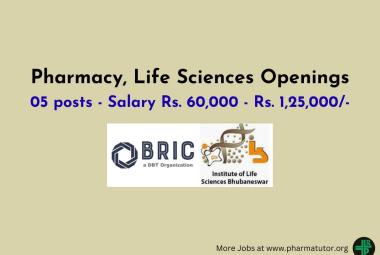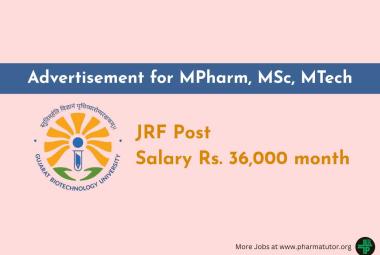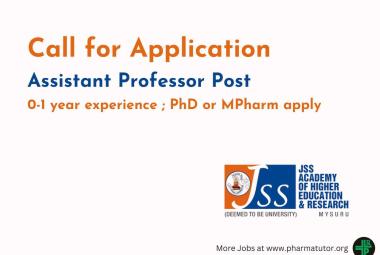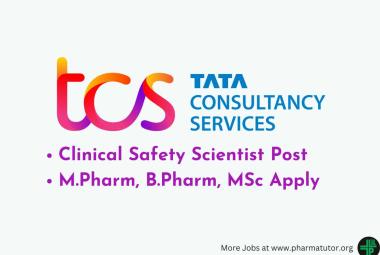 About Authors:
About Authors:
Mr. Satyanand Tyagi*, Raghvendra1, Amlan Mishra2, Patel Chirag J3, Asheesh Singh4
*President, Tyagi Pharmacy Association & Scientific Writer (pharmacy), Chattarpur, New Delhi, India-110074.
Prof. Satyanand Tyagi is a life time member of various pharmacy professional bodies like IPA, APTI and IPGA. He has published various research papers and review articles. His academic works include 51 Publications (43 Review Articles and 08 Research Articles of Pharmaceutical, Medicinal and Clinical Importance, published in standard and reputed National and International Pharmacy journals; Out of 51 publications, 11 are International Publications).
He has published his papers almost in different specialization of Pharmacy field...His research topics of interest are neurodegenerative disorders, diabetes mellitus, cancer, rare genetic disorders as well as epilepsy.
1Department of Pharmaceutics, Aligarh College of Pharmacy, Aligarh, U.P, India-202001.
2Department of Pharmacology, Smt. Vidyawati College of Pharmacy, Jhansi, U.P, India-284128.
3Department of Pharmaceutics, Maharishi Arvind Institute of Pharmacy, Mansarovar, Jaipur, Rajasthan, India-302020.
4Research Associate, Center for Research and Development, Ipca Laboratories Ltd Ratlam, Madhya Pradesh, India-457114.
*sntyagi9@yahoo.com, +91-9871111375 / 9582025220
ABSTRACT:
The umbilical blood cord being rich in stem cells needs to be preserved by means of a new technique called cryopreservation. The Process whereby whole tissues or cells are preserved by cooling at very low temperatures is known as Cryopreservation. Stem cell cryopreservation is a relatively new phenomenon; it is one way of ensuring the longevity of child’s health. This is done by banking the baby’s umbilical cord blood affluent with stem cells. Stem cells are important as they can grow into tissues, even organs like the heart or liver. What is more, they have the awesome potential to revamp damaged tissues.
Till date, over seventy diseases have been successfully treated with the help of stem cell stored in the cord blood. Research on stem cells has, by no means, abated. Scientists realizing their potential and worth are carrying out intensive research on their uses as well as ways preservation. Before preserving stem cells, a biological test is carried out to eschew the possibility of deadly diseases like various types of Hepatitis or HIV. That done, the cord blood cells are now stored by means of the technique under discussion- Cryopreservation. This technique involves adding a cryopreservant that lets the blood freeze gradually. The blood is frozen to sub-zero degree temperatures so that biochemical reactions or any other dangerous biological that could cause cell death may be arrested. Typically, the cells are stored at temperatures as low as -196, – 156, or – 120 degrees centigrade. Freezing stem cells through cryopreservation at such low temperatures is supposed to ensure their longevity. Let it be known, however, that scientists are still divided over the optimum temperatures as well as the efficacy of the cryopreservation technique itself. The aim of present article is to provide in depth knowledge about this technique of preserving stem cells of child i.e. the technique so called “Cryopreservation”. An attempt is also made to focus how this technique ensures the longevity of child’s health.
[adsense:336x280:8701650588]
Reference Id: PHARMATUTOR-ART-1488
INTRODUCTION
STEM CELLS
Stem cells are biological cells found in all multicellular organisms, that can divide (through mitosis) and differentiate into diverse specialized cell types and can self-renew to produce more stem cells. In mammals, there are two broad types of stem cells: embryonic, which are isolated from the inner cell mass of blastocysts, and adult stem cells, which are found in various tissues. In adult organisms, stem cells and progenitor cells act as a repair system for the body, replenishing adult tissues. In a developing embryo, stem cells can differentiate into all the specialized cells (these are called pluripotent cells), but also maintain the normal turnover of regenerative organs, such as blood, skin, or intestinal tissues.
There are three accessible sources of autologous adult stem cells in humans:
1. Bone marrow, which requires extraction by harvesting, that is, drilling into bone (typically the femur or iliac crest),
2. Adipose tissue (lipid cells), which requires extraction by liposuction, and
3. Blood, which requires extraction through pheresis, wherein blood is drawn from the donor (similar to a blood donation), passed through a machine that extracts the stem cells and returns other portions of the blood to the donor.
Stem cells can also be taken from umbilical cord blood just after birth. Of all stem cell types, autologous harvesting involves the least risk. By definition, autologous cells are obtained from one's own body, just as one may bank his or her own blood for elective surgical procedures. Highly plastic adult stem cells are routinely used in medical therapies, for example in bone marrow transplantation. Stem cells can now be artificially grown and transformed (differentiated) into specialized cell types with characteristics consistent with cells of various tissues such as muscles or nerves through cell culture. Embryonic cell lines and autologous embryonic stem cells generated through therapeutic cloning have also been proposed as promising candidates for future therapies [1]. Research into stem cells grew out of findings by Ernest A. McCulloch and James E. Till at the University of Toronto in the 1960s [ 2, 3].
CLINICAL APPLICATIONS OF STEM CELLS AND STEM CELL TREATMENTS
Stem cell treatments are a type of intervention strategy that introduces new adult stem cells into damaged tissue in order to treat disease or injury. Many researchers believe that stem cell treatments have the potential to change the face of human disease and alleviate suffering [4]. The ability of stem cells to self-renew and give rise to subsequent generations with variable degrees of differentiation capacities [5], offers significant potential for generation of tissues that can potentially replace diseased and damaged areas in the body, with minimal risk of rejection and side effects. A number of stem cell therapies exist, but most are at experimental stages or costly, with the notable exception of bone marrow transplantation. Medical researchers anticipate that adult and embryonic stem cells will soon be able to treat cancer, Type 1 diabetes mellitus, Parkinson's disease, Huntington's disease, Celiac Disease, cardiac failure, muscle damage and neurological disorders, and many others . Nevertheless, before stem cell therapeutics can be applied in the clinical setting, more research is necessary to understand stem cell behavior upon transplantation as well as the mechanisms of stem cell interaction with the diseased/injured microenvironment [6]. Medical researchers believe that stem cell therapy has the potential to dramatically change the treatment of human disease. A number of adult stem cell therapies already exist, particularly bone marrow transplants that are used to treat leukemia [7].
In the future, medical researchers anticipate being able to use technologies derived from stem cell research to treat a wider variety of diseases including cancer, Parkinson's disease, spinal cord injuries, Amyotrophic lateral sclerosis, multiple sclerosis, and muscle damage, amongst a number of other impairments and conditions [8].However, there still exists a great deal of social and scientific uncertainty surrounding stem cell research, which could possibly be overcome through public debate and future research, and further education of the public. One concern of treatment is the risk that transplanted stem cells could form tumors and become cancerous if cell division continues uncontrollably. Stem cells are widely studied, for their potential therapeutic use and for their inherent interest [9]. Supporters of embryonic stem cell research argue that such research should be pursued because the resultant treatments could have significant medical potential. It has been proposed that surplus embryos created for in vitro fertilization could be donated with consent and used for the research. The recent development of iPS cells has been called a bypass of the legal controversy.
[adsense:468x15:2204050025]
Laws limiting the destruction of human embryos have been credited for being the reason for development of iPS cells, but it is still not completely clear whether hiPS cells are equivalent to hES cells. Recent work demonstrates hotspots of aberrant epigenomic reprogramming in hiPS cells (Lister, R., et al., 2011). For over 30 years, bone marrows, and more recently, umbilical cord blood stem cells, have been used to treat cancer patients with conditions such as leukemia and lymphoma [10]. During chemotherapy, most growing cells are killed by the cytotoxic agents. These agents, however, cannot discriminate between the leukemia or neoplastic cells, and the hematopoietic stem cells within the bone marrow. It is this side effect of conventional chemotherapy strategies that the stem cell transplant attempts to reverse; a donor's healthy bone marrow reintroduces functional stem cells to replace the cells lost in the host's body during treatment.
NOW YOU CAN ALSO PUBLISH YOUR ARTICLE ONLINE.
SUBMIT YOUR ARTICLE/PROJECT AT articles@pharmatutor.org
Subscribe to PharmaTutor Alerts by Email
FIND OUT MORE ARTICLES AT OUR DATABASE
NEED OF PRESERVING STEM CELL
Stem cells are found in a child’s cord blood, which are used in the treatment of numerous diseases. Stem cells are also used to replace other cells that are destroyed by severe diseases other cells that are destroyed by severe diseases. There are two types of stem cells- One is embryonic cells, which are found in embryos and helps in the formation of tissues; another type is the Adult stem cells, which are called as repair cells that help in repairing and regeneration of lost cells. These days there are many methods through, which stem cells are preserved and used for curing many diseases.
There are many blood banks that help in stem cell banking in India. These banks help in preserving a child’s future like private stem banks and public stem cell banks. Public Stem cells banks preserve cord blood stem cells, which can also be used by any other person except family members if the bone marrow of the person matches with the child’s bone marrow. But in case of private cord blood banks only the family person can use the bone marrow if it matches. Cord Blood is collected during the delivery of a child, which contains viable stem cells. The collection process is conducted by the medical team and the cord blood is further sent for processing and for stem cell preservation. After reaching cord blood bank, the blood and placenta undergoes various processes, such as is the cord blood it is checked for the infections, stem cells are obtained from the cord blood and lastly cryo preservatives are added so that the stem cells remain viable. The process is done with the separation of red blood cells or by keeping the blood cells intact with specimen. After the cord blood is derived from the child’s umbilical cord, the blood is tested for the presence of communicable diseases and accordingly preservatives are added. The process of stem cell preservation is done on a slow cooling process, so that the stem cells are intact. The preservation of stem cells helps the child to fight back any severe disease and it can also be used by other person for treating their disease but only if the bone marrow matches.
It has been surveyed that stem cells from umbilical cord can treat 80 severe diseases and it has been also used in over 25000 transplants worldwide. There are many stem cell banks all over the world, where you can preserve your child’s future as well as you can also help other family members in treating and curing severe diseases. Hence, it is important to preserve a child’s stem cells. So far, stem cells were being in the seen in the context of curing cancers as well as genetic disorders of the blood. But of late blood stem cells have caught the attention of cardiac and brain specialists as well. These cells can be used to treat brain injuries and have also shown great promise with regard to cardiovascular repair in pre-clinical animal trials. Scientists studying animals with myocardial infarction have been deeply excited to learn about the ability of stem cells to move discerningly towards damaged cardiac tissues [11].
STEM CELL CRYOPRESERVATION
At the time of childbirth, the blood obtained from the umbilical cord is called as Cord Blood. After detaching the cord from the newborn baby, it is extracted from the fetal end of the cord. The cryopreservation of accumulated cord blood is carried out at -196°C & then piled up in a cord blood bank for future transplant.
For the storage of umbilical cord blood stem cell and Umbilical Cord Mesenchymal Stem Cell, stem cell banking offers a unique opportunity for these. Stem cells are undifferentiated cells which can be self renewed to an indefinite extent through cell division. These cells can also be distinguished into more mature cells with specific functions. Presently, the stem cells of Cord blood cells are used for the treatment of more than 75 hostile diseases. This cryopreservation process accompanies many risks. For proper preservation and to avoid damage of stem cells, the solution concentration must be correct. The tissue cooling process must be at very less temperature otherwise the water in the tissues goes out and form ice in the extra cellular fluid space and as a result the ice could damage the cell membranes as a reflex action. Moreover, cellular dehydration may be caused due to water migration that can again lead to the damage of cells. Before placing the cells into the deep freeze stage in liquid nitrogen, stem cells are freeze down through programmable steps in machines. On the other hand, the technique of Vitrification claims to cryopreserve the samples. This process is carried out to negate the damaging effects of ice crystal pattern. Before the process of cooling, the technique uses cryoprotectants to increase the viscosity and avoids the solution from the formation of crystallized ice.
The procedure for stem cell is an easy, non-persistent and painless one. The stem cells therapies are widely used for major treatments on demand. It hardly takes 10 minutes to bio-check the lives of your near and dear ones. Umbilical cord blood banking in India has been extended on to a large scale and the samples are stored at internationally accredited labs. Instances of clinical storage of cord blood have increase manifold in the recent years, and it is said that the number of units stored is in excess of 70,000 throughout the world. India is also a fast growing destination for the Stem Cells cryopreservation fraternity. Many regional processing centers have been set up to process the collected cord blood samples. Often there is considerable distance between the collection centers and regional processing centers which necessitates the development of short term as well as long term storage processes for the stem cells derived from the umbilical cord blood. The initial work on the theory of cryopreservation was done by James Lovelock who suggested that the damage to the red blood cells was being caused due to osmosis stress [12].
DOWNSIDES OF STEM CELLS CRYOPRESERVATION
In the cryopreservation process, the stem cells collected from umbilical cord blood samples, are frozen to sub zero temperatures.
The cryopreservation process comes with many risks. The solution concentration has to be correct otherwise the stem cells being preserved may be damaged. Also, if the tissue cooling process takes place slowly, the water within the tissues goes out of the tissues thus forming ice in the extracellular space. This ice may damage the cell membranes mechanically due to crushing. The water migration from the cell may also result in cellular dehydration, which again can damage the cells.
HOW TO AVOID DOWNSIDES OF STEM CELLS CRYOPRESERVATION
Machines are used to freeze the stem cells in programmable steps before putting them into the deep freeze stage in liquid nitrogen. The technique of Vitrification, on the other hand, claims to cryopreserve the samples while negating the damaging effects of ice crystal formation. The technique uses cryoprotectants before the cooling process, which increases the viscosity. The process also ensures that the solution doesn’t crystallize and turns into amorphous ice. The same effect can be produced through rapid cooling of water without using the cryoprotectants.
DISCUSSION AND CONCLUSION
In the ultra modern world of sciences, we have seen numerous advancements for treatment of some serious diseases and other health problems which include some controversial and forefront technologies. These technologies involve around stem cell banks and their unlimited potential for treatment of critical illnesses. Cord blood banking process of cord blood banking uses the blood derived from the umbilical cord of an infant. This cord has a very rich supply of fresh stem cells and is executed in hospitals for the treatment of many diseases like arthritis. It can be maneuvered to form various organs, tissues, blood and blood products that a human body needs to survive for long and to avoid diseases like osteoarthritis and Rheumatoid Arthritis. These cells have a unique ability to acquire the shape and structure. The functioning of the cells has proven to be effective at annulling the violating damages of some diseases.
Stem cells research has gained unprecedented importance lately owing to their enormous therapeutic potential. Stem cells are not only capable of multiplying into various cell types but also tend to carry out impressive repair work in several tissues of the body. And how are they different from other cell types? Well, they are different in the sense that these cells – known as unspecialized cells – are able to renew themselves through a process called cell division. In certain organs such as the bone marrow or the gut damaged or tattered tissues constantly get replaced thanks to stem cell activity.
In some organs like the pancreas and heart, stem cells replenish only under certain conditions. Scientists are predicting that in the near future the collection of cord blood at birth will be nearly as common as birth itself. More than the existing uses of cord blood stem cells, research indicates that these stem cells someday may be used to treat numerous diseases including Alzheimer’s disease, Cartilage regeneration, Diabetes, Heart disease, Liver disease, Multiple Sclerosis, Muscular dystrophy, Spinal Cord Injury, Stroke, Many Cancers including: Acute and Chronic Myelogenous Leukaemia, Acute Lymphoblastic Leukaemia, Blood Disorderslike Thalessemia, Sickle Cell Disease, Fanconi's Anaemia as well as different Immunodeficiency’s. According to the researchers it could cure many diseases for example leukemia and other diseases like brain injuries. To cure such diseases, Umbilical cord blood is brought into play as it is full of valued stem cells. Disease like Spastic paralysis has been treated in successful manner with these cells. With the continuation of research, it is believed to cure many more diseases such as spinal cord injury and treatment of arthritis in joints. This research is at the forefront of medicine and there are tremendous theories for new medicinal modalities for diseases with the use of stem cells.
ACKNOWLEDGEMENT
The corresponding author, Prof. Satyanand Tyagi is highly thankful to his Parents, Teachers, wife Pooja, and daughter Tanisha for their moral support and encouragement. Last but not the least, support of all my students and the one above all of us, the omnipresent God, for answering my prayers for giving me the strength to plod on despite my constitution wanting to give up and throw in the towel, thank you so much Dear Lord.
REFERENCES
1. Tuch BE, “Stem cells—a clinical update”, Australian Family Physician, 2006, 35 (9), 719–21.
2. Becker AJ, McCulloch EA, Till JE, “Cytological demonstration of the clonal nature of spleen colonies derived from transplanted mouse marrow cells”, Nature, 1963, 197(4866): 452–454.
3. Siminovitch L, McCulloch EA, Till JE, “The distribution of colony-forming cells among spleen colonies”, Journal of Cellular and Comparative Physiology, 1963, 62(3), 327-336.
4. Lindvall O, Kokaia Z, “Stem cells for the treatment of neurological disorders”, Nature, 2006, 441 (7097): 1094–1096.
5. Weissman IL, “Stem cells: units of development units of regeneration, and units in evolution” for the treatment of neurological disorders”, Cell, 2000, 100 (1): 157-168.
6. Singec I, Jandial R, Crain A, Nikkhah G, Snyder EY, “The leading edge of stem cell therapeutics”, Annu. Rev.Med, 2007, 58, 313-328.
7. Csaki C, Matis U, Mobasheri A, Ye H, Shakibaei M, "Chondrogenesis, osteogenesis and adipogenesis of canine mesenchymal stem cells: a biochemical, morphological and ultra structural study", Histochem.Cell Biol., 2007, 128 (6), 507–20.
8. Yamada Y, Ueda M, Naiki T, Takahashi M, Hata K, Nagasaka T, "Autogenous injectable bone for regeneration with mesenchymal stem cells and platelet-rich plasma: tissue-engineered bone regeneration", Tissue Eng., 2004, 10 (5–6), 955–964.
9. Wade N (2006-08-14). “Some Scientists See Shift in Stem Cell Hopes”. New York Times. Retrieved 2006-12-28.
10. Bone Marrow Transplantation and Peripheral Blood Stem Cell Transplantation In National Cancer Institute Fact Sheet web site. Bethesda, MD: National Institutes of Health, U.S. Department of Health and Human Services, 2010. Cited August 24, 2010.
11. cryobanksindia.com/blog/index.php/why-is-it-important-to-preserve-stem-cells/
12. cryobanksindia.com/blog/index.php/tag/stem-cell-banking/
NOW YOU CAN ALSO PUBLISH YOUR ARTICLE ONLINE.
SUBMIT YOUR ARTICLE/PROJECT AT articles@pharmatutor.org
Subscribe to PharmaTutor Alerts by Email
FIND OUT MORE ARTICLES AT OUR DATABASE









